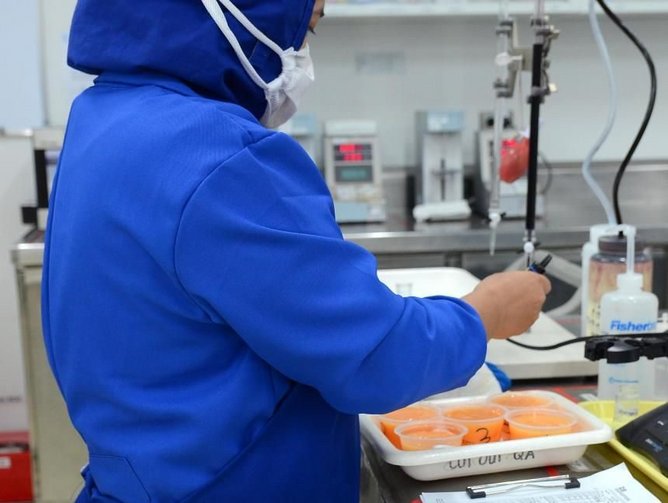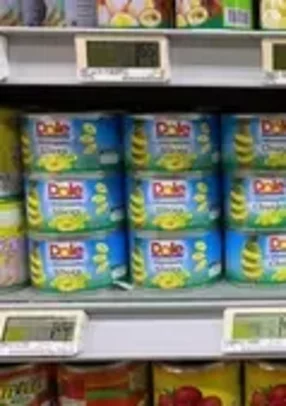Dole Asia Holdings becoming “fit for the future” through procurement transformation
As Vice President for Strategic Sourcing and Procurement at fruit and vegetable giant Dole International, Arindam Sengupta sees the potential for a revolution in the way sourcing and procurement in agribusiness are carried out. “Traditionally the agribusiness sector has been behind in terms of procurement practices,” he explains. “Partly that’s due to its complexity, but also to the fact that new technologies, digitalisation and everything else which has been applied in other industries has not been as developed on the agribusiness side.”
A winning strategy
With this in mind, Dole has implemented a number of strategies geared towards improving efficiency and benefitting the bottom line at the business. Such an approach is vital given the nature of the industry. “Strategic procurement is critically important for Dole's bottom line,” says Sengupta. “Essentially, we are a commodity business where we buy commodities and then process them to sell as branded products. Given the fact that 70% of our costs lie in procurement, we have to be competitive and make sure that our supply chains are very affordable.” One such measure has seen the exploitation of seasonal differences around the world. “The peaches that we buy are typically from Greece and China,” says Sengupta. “The problem is that they have similar seasons in the same hemisphere. Peach season is between one and one and a half months, so we had to buy a whole year’s supply in that time, placing a constraint on quality and a risk with climate. Now we look at different hemispheres strategically. Typically, the same fruit is grown in the northern hemisphere in a different season compared to the southern hemisphere, so we’ve gone out to South America and South Africa to locate, identify and develop new sources to mitigate that risk.”
Another development has been the streamlining of Dole’s procurement structure, supported by its procurement excellence team. “We are moving from a very decentralised procurement structure with a lot of buyers to a much more centralised, centre of excellence model. That’s ensuring the different Dole entities have a standardised approach, while still maintaining flexibility at the local level for all the operational and tactical buying.” Dole is also implementing a category management approach. “Our category managers think strategically to develop new products and ways of buying using the external resources of suppliers and partners, developing our business for the future.”
Sustainability, too, has become a critical part of Dole’s strategy, from both a moral and a business perspective. “How do we make our procurement organisation fit for the future? It’s clear the sustainability agenda looms large in the minds of our consumers. Focusing on sustainability will affect how much customers are willing to pay for our products compared to our competitors. To achieve that we’re going to need to build close links with new product allotments and new marketing agendas, and work end to end with marketing and sales organisations to stay ahead of the curve.” Sengupta is clear that a sustainable approach can add value to Dole’s business by acting as a selling point for customers. “Consumers are more likely to buy products from companies who have sustainable practices,” says Sengupta. “That’s in terms of how they source, make or package things. Sustainability is a big focus as we build relationships with external partners and suppliers, and as we head into the future and a new generation of buyers and consumers, it’s going to become more and more important.”
Technology
To achieve the potential sourcing and procurement efficiencies identified by Sengupta, the company has put to work numerous technological solutions. Sengupta gives the concrete example of pineapple, which like other commodities operates on a boom and bust cycle. “When prices are high, farmers rush to grow the crop in larger volumes, depleting other crops. When prices are low due to demand or oversupply, then they shift to other crops because they're not getting enough profitability from their farms.” To manage this, Dole has implemented advanced predictive models that help it to better understand supply and demand of a particular commodity. “To come up with a predictive model of demand and supply patterns globally and regionally is always a challenge. We have recently been working to develop a much more sophisticated model which not only uses historical data but incorporates many other factors. That includes farmer behaviour, demand in the market, inventory being held in different locations and markets, and how trends are changing in the industry in terms of consumption and crop growing, et cetera.” To collect the data that is put in to the models, Dole is pioneering yet more digital solutions. Future technology investments will look at using drones to replace physical surveys, using AI for better demand forecasting from the field and implementing more modern practices in farm management and irrigation.
Software solutions have also been implemented across the business. Such unified systems have brought increased clarity and understanding of business operations. “We took the decision to roll out a brand new enterprise resource planning (ERP) system across the entire supply chain, which enables us to have critical visibility on data,” says Sengupta. “Data is one of the most important factors behind making decisions, but that was one of our weak points. Our data was very segmented, mostly very manual and driven by different legacy systems. One of the first things that we decided, which has already been rolled out, is a single ERP from agri to marketing – end to end. That will enable us to capture and make visible data on what we are doing, where we are spending and what we are and aren’t doing correctly.” The more decentralised nature of agribusiness compared to other industries makes the inherent scalability of software solutions attractive, as has been the case with digital purchasing at Dole. “On the back of ERP, we are also implementing new procurement software from Ivalua. Ivalua is very suitable for us, very flexible and caters to our needs. What we are trying to do is not only digitalisation and analysis of the entire experience of interaction with suppliers, vendors and partners, but also the development of an eMarketplace. The dream is to move towards a more Amazon-like user experience for the end users, who are our end customers internally, where they can seamlessly input the items that they want, the standards and specifications, and then have a list of fruit suppliers.”
With clear strategies guiding the deployment of technology to fulfil its aims, Dole is in the midst of a purposeful and effective digital transformation of its supply chain functions. Having presided over these developments, Sengupta is clear about just what it takes to deliver on the promise inherent in a properly managed supply chain. “There are four pillars of sustainable advantage to empower strategic sourcing and procurement in any organisation. The first one is affordability: we have to continuously improve – if we are just standing still, even if we are ahead we will be caught up to. Second is sustainability: all of our supply chains, all of our activities, all of our products, everything should be sustainable at the end. That’s key for the future, from a regulatory, environment and consumer point of view. Third is reliability: do we have the alternative sources we need? We have to have reliability in our supply chains, meaning that we have to provide our customers and our consumers with products no matter any adversity in the supply chain. The fourth part is people: that is always the most important thing because anything can be done if you have the right people. Creating the right talent, having the right mindset and the right approach with empowered and motivated people will drive the organisation forward. With these factors in mind, the procurement and sourcing function at Dole can deliver a sustainable, predictable & profitable growth.”




